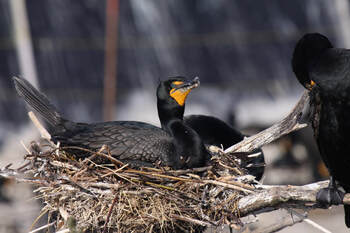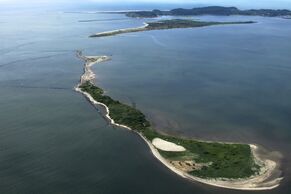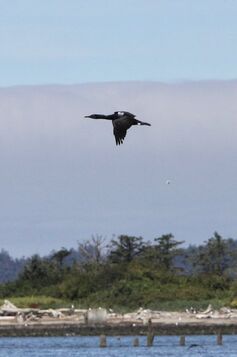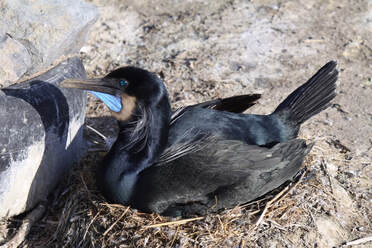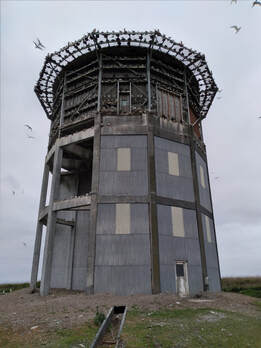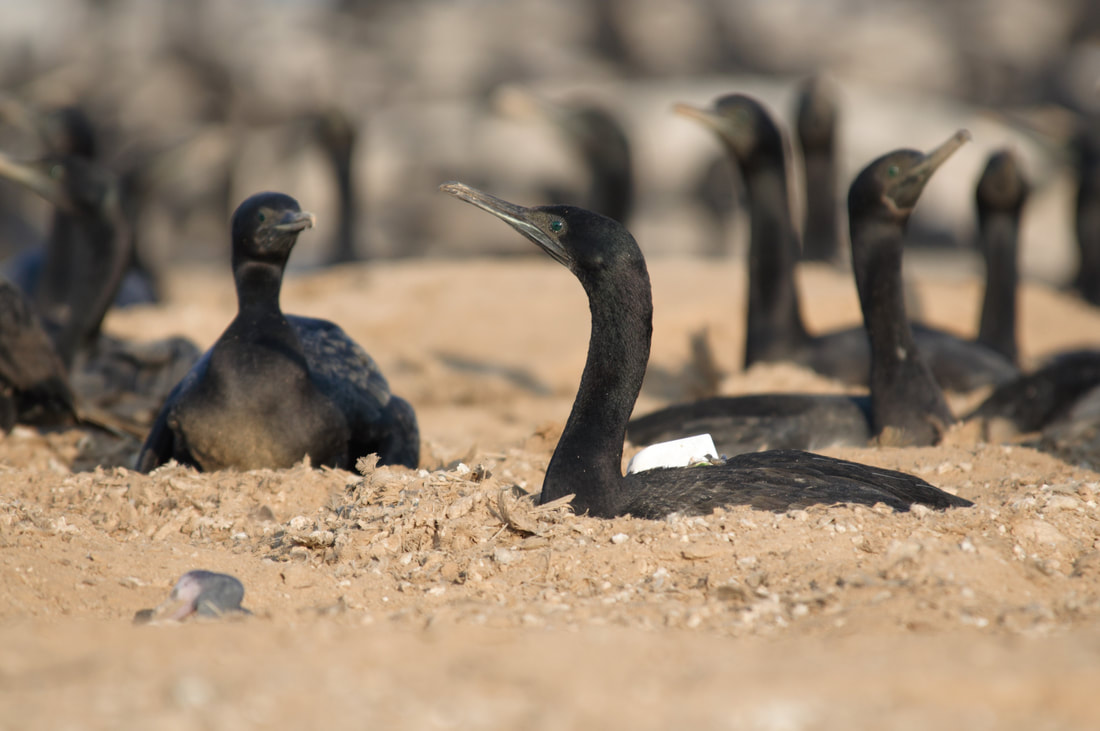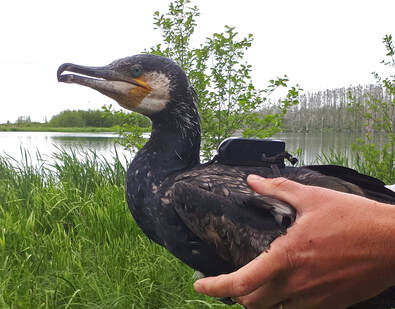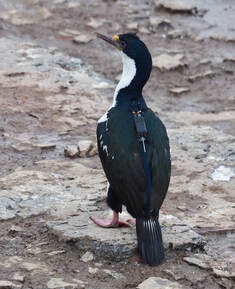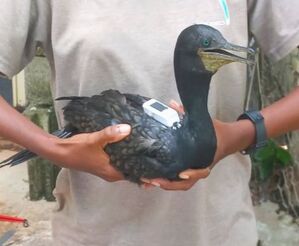Cormorants and shags are distributed worldwide and occupy a unique sampling space that is often associated with areas of high biological productivity. Marine species provide an opportunity to collect fine scale observations and measurements in coastal regions across the globe.
Our Project Species and Tagging Locations
|
|
See our blog posts to follow work from the field
July 27, 2022 - MAY 16, 2022 - SEPTEMBER 7, 2020 - JULY 27, 2020 - A field season on Middleton Island: Tracking pelagic cormorants in the Gulf of Alaska - By Brendan Higgins, Jillan Soller and Adam Peck-Richardson
|
Double-crested Cormorant (Nannopterum auritum)
|
The Double-crested Cormorant is a large cormorant (1.2- 2.5 kg) with a wide distribution throughout North America. It breeds from the Aleutian Islands to northwest Mexico along the Pacific Coast, and from Newfoundland to Cuba along the Atlantic Coast. Inland populations are also found throughout the Canadian and US interior, including the Great Lakes. This species utilizes a wide range of coastal marine habitats, including estuaries, mangrove swamps, rocky coastlines, and coastal islands, as well as inland lakes, rivers, marshes, and ponds.
|
Brandt’s Cormorant (Urile penicillatus)
|
The Brandt’s Cormorant is a large cormorant (1.4 - 2.6 kg) endemic to the California Current system. It breeds along the entire West Coast from Alaska to Mexico. It is a marine specialist, inhabiting nearshore coastal waters, large bays, and occasionally estuaries or coastal lagoons.
|
Tagging locations
Columbia River estuary, Oregon & Washington - 2014, 2019, 2022 - OngoingSan Luis Obispo Bay, California - 2018
Southeast Farallon Islands, California - 2021
Columbia River estuary, Oregon & Washington - 2014, 2019, 2022 - OngoingSan Luis Obispo Bay, California - 2018
Southeast Farallon Islands, California - 2021
Pelagic Cormorant (Urile pelagicus)
|
The Pelagic Cormorant is a medium sized cormorant (1.2 - 2 kg) and is the smallest of the North Pacific species. It breeds in Northeast Asia, from the bearing strait south to the Kuril Islands, Russia, and in North America, from northern Alaska to Baja California, Mexico. As a marine specialist, it utilizes nearshore, coastal habitats and typically breeds on rocky habitat along outer coasts, bays, inlets, and estuaries.
Tagging Locations
|
Socotra Cormorant (Phalacrocorax nigrogularis)
|
Tagging Locations
|
The Socotra Cormorant is a medium sized (1.3 - 1.8 kg), slim, long-billed cormorant. It's known range is restricted to the Arabian Gulf, the Gulf of Oman, and south into the Gulf of Aden. The species is exclusively marine and breeds on barren desert islands.
Socotra Cormorant populations have declined throughout their range since the 1980s and the species is currently categorized as Vulnerable by the International Union for Conservation of Nature (IUCN). |
Great Cormorant (Phalacrocorax carbo)
|
The Great Cormorant (2.6 - 3.7 kg) is the most widely distributed of all species and has a breeding distribution across Europe, Africa, Asia, Australasia, and eastern North America. This species is a generalist and found in both freshwater and coastal habitats through much of its range. Tagging Locations
|
Guanay Cormorant (Leucocarbo bougainvillii)
|
Tagging Locations
|
The Guanay Cormorant (2 kg) is distributed on the Pacific Coast of South America and is closely tied to the Humboldt Current. As a resident along the coasts of Peru and Chile, this species is a marine specialist and breeds on offshore islands and remote headlands.
|
Black-faced Cormorant (Phalacrocorax fuscescens)
|
Tagging locations
|
The Black-faced cormorant is a medium sized cormorant, weighing around 1.5kg, and is found along the coasts of South Australia, with two independent populations: one in Southwestern Australia; and one in South Australia, Victoria, and Tasmania. As a costal species, it feeds in nearshore habitats, including bays and inlets and breeds on sea cliffs and rocky islands.
|
Imperial Cormorant/Shag (Leucocarbo atriceps)
Cape Cormorant (Phalacrocorax capensis)
|
Tagging Locations
|
The Cape Cormorant (Phalacrocorax capensis) is a medium sized cormorant, weighing around 1.1-1.3kg. This species range covers costal Southern Africa. It breeds on the coasts of Angola, Namibia and W & S South Africa, with significant post breeding dispersal north as far as the Republic of Congo and Southern Mozambique. It is an almost exclusively marine forager, fishing in the cold waters of the Benguela Current.
|
Indian Cormorant (Phalacrocorax fuscicollis)
|
The Indian Cormorant is a small cormorant (600 – 790g). It is distributed throughout India and Sri Lanka and into Indochina. The species is a generalist and found in both freshwater and coastal habitats through much of its range. Tagging Locations
|
Spotted Shag (Phalacrocorax punctatus)
|
Tagging Locations
|
The Spotted Shag (Phalacrocorax punctatus) is a marine species, found throughout coastal New Zealand and breeds on cliffs along rocky coastlines and inshore islands. This species forages in bays, inlets, and estuaries but also in deep offshore waters.
|
European Shag (Gulosus aristotelis)
|
Tagging Locations
|
The European Shag (Gulosus aristotelis) is a marine species, found in nearshore habitats. It breeds on sea stacks, cliffs, and on the ground, along rocky coast lines and island. It is distributed throughout coastal Europe, Iceland, Northern Scandinavia and Morocco and is recognized as three sub-species, Atlantic (Gulosus aristotelis aristotelis), Mediterranean (Gulosus aristotelis desmarestii) and Moroccan (Gulosus aristotelis riggenbachi).
|
Neotropic Cormorant (Nannopterum brasilianum)
|
Tagging Locations
|
The Neotropic Cormorant (Nannopterum brasilianum) is a small, versatile cormorant that inhabits coastal and inland waters throughout most of South and Central America. Its range continues up through northwest Mexico and into southern United States. This species utilizes a wide range of coastal marine habitats, including estuaries, mangrove swamps, rocky coastlines, and coastal islands, as well as inland lakes, rivers, marshes, and ponds.
|
Temminck's Cormorant (Phalacrocorax capillatus)
|
Tagging Locations
|
The Temminck’s Cormorant (Phalacrocorax capillatus) is a large cormorant, weighing around 2.3 - 3.3 kg. It is distributed throughout coastal NE Asia, from Russia Far East and the Sea of Japan, to NE China, Japan, and Korea. It is a marine species, favoring rocky coastlines and offshore islands and is rarely found in inland waters.
|
African Penguin (Spheniscus demersus)
|
Tagging Locations
|
Humboldt Penguin (Spheniscus humboldti)
Tagging Locations
- Punta San Juan, Peru - 2023, 2024






